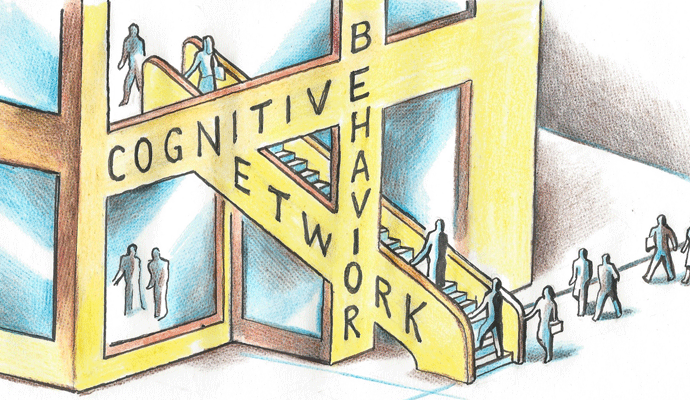The Bionic Company
Businesses need to develop their behavior, cognitive, and network capital so they can create and capture value that competitors can’t erode.
A version of this article appeared in the Autumn 2018 issue of strategy+business.
During the heyday of the Industrial Revolution, at the end of the 19th century, few people understood the intricate dynamics of financial capital. Its growth often seems slow at first, but when managed well, it doubles regularly; this exponential growth can accelerate a company's progress. For early companies that pioneered better approaches to business economics, financial capital gave them a strong competitive advantage.
As the 20th century unfolded, two additional types of equity became important: human capital (the return gained from the development and deployment of staff and contractors), and natural capital (the manageable value of land, water, and other environmental resources). Business success came to depend on managing these three forms of capital effectively.
In the 21st century, with the accelerating increase of technological innovation, three more forms of capital have become critical to creating value: behavior capital (developed by tracking ongoing activity), cognitive capital (the value inherent in algorithms), and network capital (the connection points, with people and machines, that a company can deploy). Each of these forms compounds itself in an exponential way, and each also reinforces the others’ growth. We sometimes refer to them collectively as BeCoN capital, because they are most effective when marshaled together. They are as poorly understood as financial, human, and natural capital were at the dawn of the 20th century.
Companies that manage all six forms of capital are what could be called bionic corporations: Some of them have gained immense value in very short periods of time. For example, five of the most highly capitalized companies on the U.S. stock market are bionic: Alphabet (Google), Amazon, Apple, Facebook, and Microsoft together account for about 13 percent of the capitalization of the entire U.S. stock market. Bionic companies have grown rapidly without relying solely on physical assets such as people and land, or even on managing funds and investments effectively. Instead, they have grown by building and linking digitally based cross-boundary platforms that make the most of their BeCoN capital.
Let’s look more closely at the three new forms of wealth accumulation that bionic companies deploy.
• Behavior capital is the collection and modeling of data that tracks the behavior of people, companies, nature, and manufactured things. As an Apple watch measures an ongoing heart rate, a GE aircraft engine records data on fuel performance, and Google captures everything about everyone on its platform, the value of that behavioral data increases. Apple, GE, Google, and their customers can use that information to make models of the aggregate behavior of people and machines, and therefore improve the value of their respective activities.
• Cognitive capital is the set of algorithms (some transparent to onlookers, others opaque) that represent the codified knowledge flows of individuals and the enterprise in a bionic world. These algorithms are becoming sophisticated enough to make many decisions on their own, or to start a machine-learning process that can lead to automated, continually improving routines. For example, the giant hedge fund Bridgewater uses artificial intelligence-based algorithms to make some decisions. Its co-chairman, Ray Dalio, has joked that he is trying to reduce his staff down to one employee, and thus run entirely on cognitive capital.
• Network capital is the set of connection points that an enterprise can use to develop and execute a successful strategy. For example, Netflix has developed, over the years, a large group of followers who have gotten into the habit of watching shows on its platform — and who exchange messages on social media about what they’ve watched. This consistent engagement is a form of network capital, enlarging audiences for many Netflix series and thus contributing to the overall value of its programming. Similarly, GE held an open innovation–style competition for an engine bracket design that would cost less than US$7,000; although its own engineering team took part, the winner was a 21-year-old from Indonesia.
Bionic companies have grown without relying on physical assets, or on managing funds and investments effectively. Instead, they have grown by building and linking digitally based cross-boundary platforms.
As with financial capital, each of these assets can grow in exponential fashion. The exact rate of growth may vary, but it’s nonlinear; the assets grow more rapidly than your expectations. They are also mutually reinforcing — or can at least be designed to reinforce one another. You get faster growth when you put these forms of capital to work together.
How can your company accomplish something similar? By finding ways to raise the value of your own behavior, cognitive, and network capital. For example, in 2016, when Amazon entered the auto parts retail business, its established brick-and-mortar competitors were complacent. They assumed their customers would always want a personal connection with the experts in their stores. But then Amazon began paying auto manufacturers 30 percent more for their products while continuing to underprice its rivals significantly. It used its network capital to pair those manufacturers with third-party service providers for specific product sales. Amazon also tracked its customers’ purchases (behavior capital) to drive algorithms that can adjust prices and offers on the fly (cognitive capital). Major auto retailers lost significant market capitalization.
The venture capital firm SignalFire, with about US$380 million under management, has built a superior position through its BeCoN assets. SignalFire maintains an extensive database of several types of talent: software engineers, data scientists, and designers, among others. It has more than 10 million engineers in the database, and it estimates that it has profiled about 85 percent of all the software engineers practicing in English. Its algorithms analyze where the engineers went to school, how well they did, where they worked, how successful the company was, and what contributions they have made to academia or to open source projects through sites such as Bitbucket and GitHub. SignalFire uses this information as a key input into its investment decision making — along with company performance metrics — to make sure it is backing the best teams on an absolute and comparative basis. These are teams that have not only strong credentials but also proven track records, even if their backgrounds are a bit unusual. SignalFire can also use these three forms of capital to predict which people are likely to leave their employers soon, and to find connections with those individuals. Imagine what type of advantage this gives to a firm that might be interested in investing in technology companies.
CB Insights ingests massive amounts of data to predict future trends. It processes millions of articles, patent filings, and other documents, mixing them together in one vast data management system and delivering results to its analysts, who then publish the conclusions they reach about technological and financial dynamics. CB Insights’ high levels of behavior and cognitive capital and the robustness of its networks have led to the development of tools it is famous for. For example, its market maps allow anyone to look at an economic sector (such as agricultural technology, life sciences, or construction) and see at a glance who the top competitors are, and what they are investing in. This enables investors to be more up-to-date and faster, with a more productive staff and more significant impact. The company’s growing network of sources and subscribers continues to make it more influential.
GE’s aircraft engine business uses sensors built into its engines and turbines to generate high levels of behavior capital (i.e., data describing what the engine is doing). Machine-learning algorithms conduct diagnostics and engine controls, thus providing cognitive capital. GE’s engines around the world are in touch with one another, generating network capital that allows insights from one engine to be relevant to all. GE’s operations help it accrue and reinvest all three forms of capital. For example, its store of data about engine behavior fans out to staff and customers on the ground, who know more about the engine’s behavior than the pilots do. When it combines these assets with cognitive capital, embedded in its software routines, GE can deliver extraordinary engine maintenance service with high reliability at a very low cost, requiring fewer extra replacement engines to be parked around the globe in case of breakdown. GE’s pricing model reflects this advantage; the company sells its engines not by the unit, but by the hour of use, just like cloud providers in the IT field do. This approach helps the company improve its designs and make more efficient use of its field service and design talent.
Incumbent companies that do not develop their BeCoN capital will find themselves on the wrong side of the next wave of industrialization. If you are an executive in an old-style company, a good place to start your BeCoN development is by asking yourself about each of these three newforms of capital in turn.
• What do you know about your customers’ behavior (or that of the end-users in your sector)? Do you capture it, analyze it, and model the ways it might change? If not, why not?
• What can you automate using AI and advanced analytics? How can you use systems that respond in real time to give customers faster service, better products, and a more powerful experience?
• How can you build a complex, effective network? This network allows you not only to manage your customers but also to leverage your deep knowledge of their behavior, providing service from other companies in your business ecosystem as well as your own, packaged in a way that meets your customers’ needs. If you are first in the demand chain, with the largest network, then you have a deep competitive advantage.
Finally, although the three new BeCoN forms of capital are critically important, don’t forget about the other three. FiHuNa capital — your financial value, the human talent you develop and draw on, and the natural resources you control — will also be critically important in the years to come. As you make the most of behavior, cognitive, and network capital, you will reinforce your growth in general.
Author profiles:
- Miles Everson is vice chairman of PwC US and the global advisory leader of the PwC network. He oversees the firm’s capabilities in consulting, deals, and forensics. He is based in New York.
- John Sviokla recently retired as a principal with PwC US and its marketing leader. He is the coauthor of The Self-Made Billionaire Effect: How Extreme Producers Create Massive Value (with Mitch Cohen; Portfolio, 2014).



